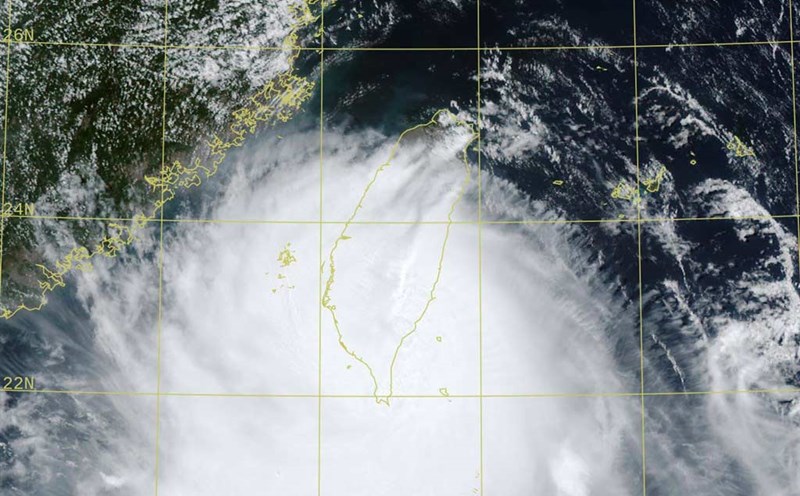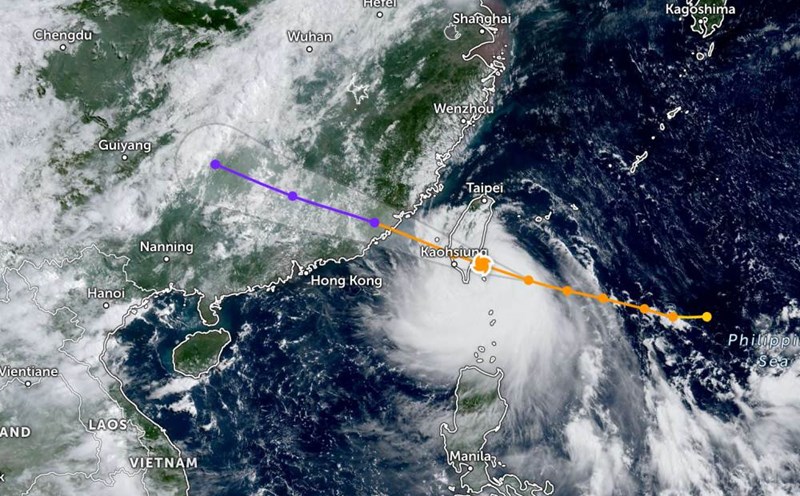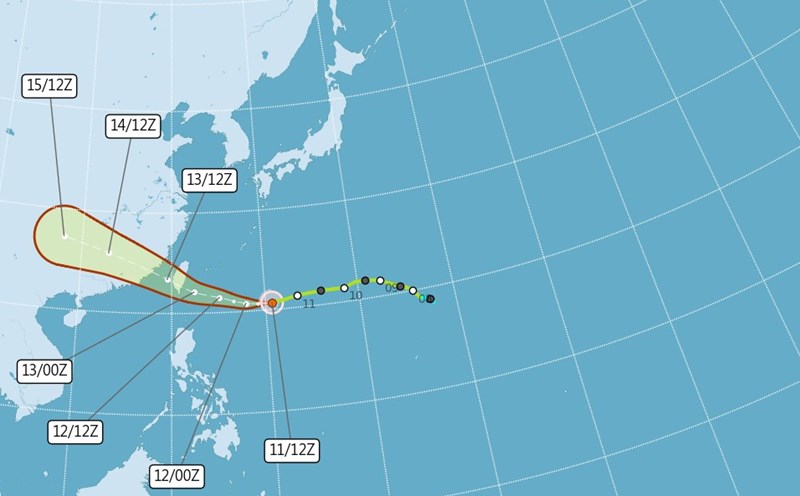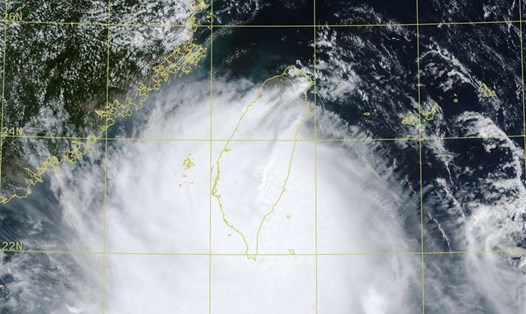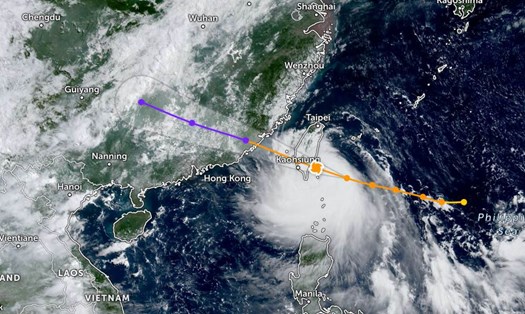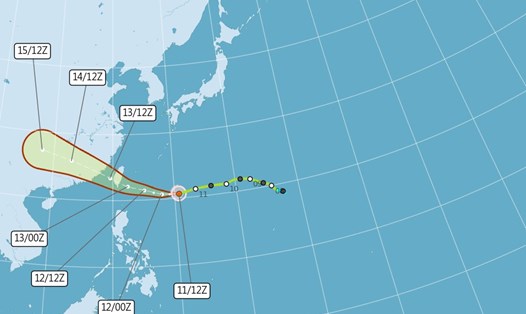According to the latest storm information from the Philippine Atmospheric, Geophysical and Astronomical Services Administration (PAGASA), by August 14 13 (local time), typhoon Podul had officially entered the East Sea.
The center of the storm is located at about 22.7 degrees North latitude - 120.7 degrees East longitude, close to the mainland of Taitung (Taiwan, China), 245 km North-Northwest of Itbayat, Batanes. The strongest wind near the center of the storm reached 140 km/h, gusts of up to 230 km/h.
The storm is moving west-northwest at a speed of about 25 km/h, moving deeper into the East Sea and towards the mainland in the Ytedong region (China).

Typhoon Podul is forecast to weaken and gradually dissipate over mainland China in the next 36 hours.
Earlier, at noon on August 13, Typhoon Podul made landfall in Taitung (Taiwan, China) with gusts of up to 191 km/h. Local authorities have urgently evacuated thousands of people from the area expected to be crossed by Typhoon Podul. Meanwhile, many neighboring areas are still making efforts to overcome the consequences of the previous landfall.
In the East Sea, according to the National Center for Hydro-Meteorological Forecasting, on the night of August 13 and 14, the northeastern sea area of the North East Sea will have strong winds of level 8-10, gusting to level 11-12; very rough seas; waves 2.0-5.0m high.
The sea area from Khanh Hoa to Ho Chi Minh City and the western sea area of the South China Sea (including the western sea area of Truong Sa): strong southwest winds of level 5, sometimes level 6, gusting to level 7-8; rough seas; waves 1.5-3.0m high.
In addition, on the night of August 13 and August 14, the northeastern sea of the North East Sea will have storms and rain. Gulf of Tonkin, the sea area from Khanh Hoa to Ca Mau, Ca Mau to An Giang, the Gulf of Thailand, other sea areas of the North East Sea (including Hoang Sa special zone), the sea area south of the Central East Sea and the South East Sea (including Truong Sa special zone) will have scattered showers and thunderstorms.
During thunderstorms, there is a possibility of tornadoes, strong gusts of wind and waves 2.0-3.0m high.
It is forecasted that on the night of August 14 and August 15, the sea area from Lam Dong to Ho Chi Minh City and the western sea area of the South China Sea (including the western sea area of Truong Sa) will have northeast winds of level 5, sometimes level 6, gusting to level 7-8, rough seas; waves from 2.0-3.0m high.
Risk level of natural disasters due to strong winds at sea: northeastern sea of the North East Sea level 3, sea area from Khanh Hoa to Ho Chi Minh City level 2.
People and tourists planning to visit the above sea areas, or travel to destinations in southeastern China in the next few days should pay attention to weather forecasts. Check flight schedules and follow local instructions to ensure safety.

